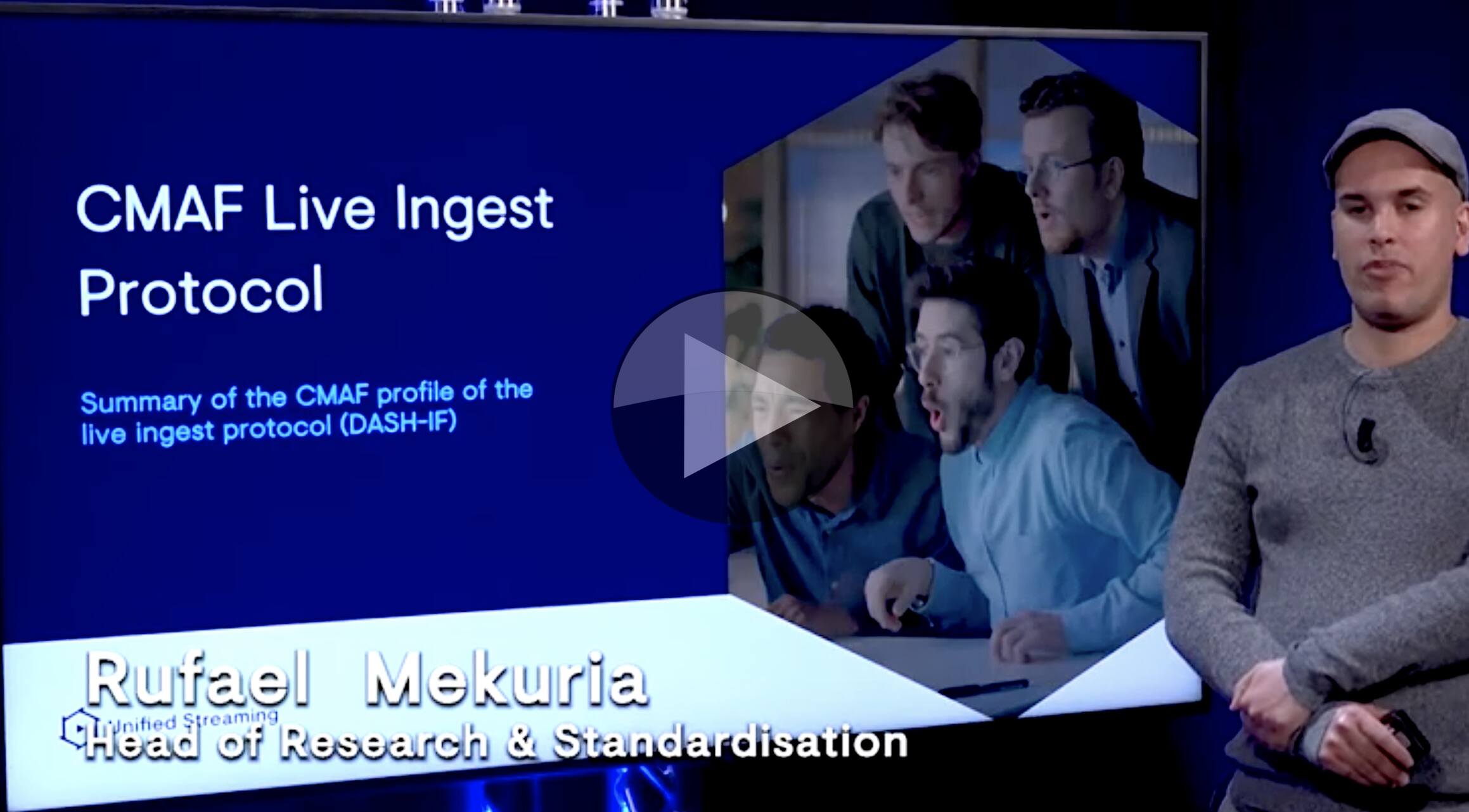We’ve heard before on The Broadcast Knowledge about CMAF’s success at bringing down the latency for live dreaming to around 3 seconds. CMAF is standards based and works with Apple devices, Android, Windows and much more. And while that’s gaining traction for delivery to the home, many are asking whether it could be a replacement technology for contribution into the cloud.
Rufael Mekuria from Unified Streaming has been working on bringing CMAF to encoders and packagers. All the work in the DASH Industry forum has centred around to key points in the streamin architecture. The first is on the output of the encoder to the input of the packager, the second between the packager and the origin. This is work that’s been ongoing for over a year and a half, so let’s pause to ask why we need a new protocol for ingest.
RTMP and Smooth streaming have not been deprecated but they have not been specified to carry the latest codecs and while people have been trying to find alternatives, they have started to use fragmented MP4 and CMAF-style technologies for contribution in their own, non-interoperable ways. Push-based DASH and HLS are common but in need of standardisation and in the same work, support for timed metadata such as splice information for ads could be addressed.
The result of the work is a method of using a separate TCP connection for each essence track; there is a POST command for each subtitles stream, metadata, video etc. This can be done with fixed length POST, but is better achieved with chunked tranfer encoding.
Rufael next shows us an exmaple of a CMAF track. Based on the ISO BMFF standard, CMAF specifies which ‘boxes’ can be used. The CMAF specification provides for optional boxes which would be used in the CMAF fragements. Time is important so is carried in ‘Live basemedia decodetime’ which is a unix-style time stamp that can be inserted into both the fragment and the CMAF header.
With all media being sent separately, the standard provides a way to define groups of essences both implicitly and explicity. Redundancy and hot failover have been provided for with multiple sources ingesting to multiple origins using the timestamp synchronisation, identical fragments can be detected.
The additional timed metadata track is based on the ISO BMFFF standard and can be fragmented just like other media. This work has extended the standard to allow the carrying of the DASH EventMessageBox in the time metadata track in order to reuse existing specifications like id3 and SCTE 214 for carrying SCTE 35 messages.
Rufael finishes by explaining how SCTE messages are inserted with reference to IDR frames and outlines how the DASH/HLS ingest interface between the packager and origin server works as well as showing a demo.
Watch now!
Speaker
 |
Rufael Mekuria Head of Research & Standardisation, Unifed Streaming |


